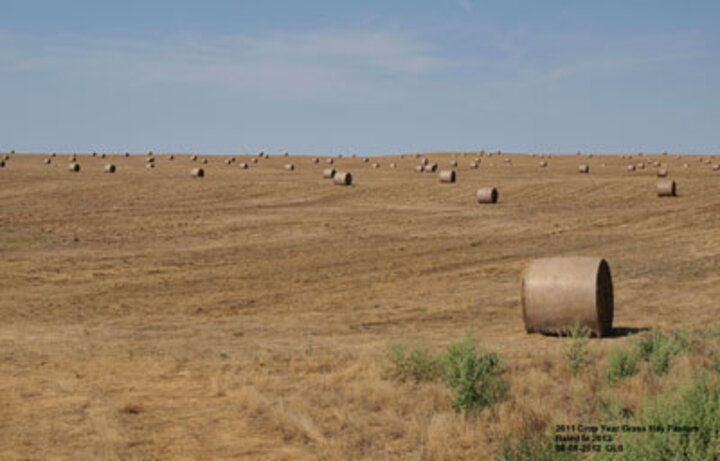August 10, 2012

|
Tom Dorn, Extension Educator in Lancaster County: Corn has hit black layer. Ears do not have visible molds. The best dryland ear I have found had 666 kernels but the kernels were probably half of a normal weight. Soybeans have some pods down in the lower canopy but likely just one-third of the usual number of pods. The more recent blooms in the upper canopy have nearly all aborted. If we get a rain soon, the active pods could still fill and the there could still be some new blooms. Hopefully we won't have an early frost!
Monte Vandeveer, Extension Educator in Otoe County: About half the corn here is dryland. Some of it is hanging on, and some is past producing yield, even if it does start raining. Growers are testing for silage. Soybeans are little, but still mostly green with a few yellow patches. We’ve had some spotty rains, but more rain might give soybeans enough of a break to make yield.
Keith Jarvi, Extension Educator in Dakota, Dixon, and Thurston Counties: Dryland corn is shot. Beans are hanging on and progressing rapidly, but in need of some good rains. There were a few spotty rains last week, but we need more. We’ve gotten a few calls about spider mites in beans, and while it's late in the season for them, we could still get a flush as the temperature cools. A lot are starting to cut silage up here and leaving a segment for crop insurance.
Robert Tigner, Extension Educator for Chase, Dundy, Hayes, and Hitchcock Counties: There is a little green still in some fields of dryland corn, but it’s unlikely to have pollinated. Pollination has pretty much been unsuccessful here and it doesn’t look like we’ll end up with any significant yield from dryland corn. A very few producers have cut dryland corn for hay or chopped it. A lot of people are looking for forage and planning to plant oats, forage, or something similar. Beet armyworms have been reported in pinto beans and growers are flying on insecticides. I have recommended Cobalt in these instances. I’ve also received reports of spider mites in dry beans.
Michael Rethwisch, Extension Educator in Butler County: Like everywhere else, we’re dry and have only received 0.1 to 0.2 inch of moisture recently. There have been spotty rains in the area and north of York they received 0.75 inch of rain. Condition of dryland corn is variable with predicted yields ranging from 40 to 100 bu/ac. Irrigated soybeans look very good, but dryland soybeans are extremely variable. In some soybeans, we’re seeing a lot of lower leaves drop off due to lack of soil moisture and as much as one-third of the plant is defoliated already, with small pockets where all the leaves have already fallen off. Some field areas are yellow. Most of the pests we’re seeing are in alfalfa. Growers have treated for spotted alfalfa aphids and are starting to pick up cowpeas in alfalfa and an occasional spider mite in alfalfa. Alfalfa regrowth has been quite slow. We’ve gotten some questions about making soybean hay and what the price and protein level might be. Some corn has been shopped for silage, but not as much here as in nearby counties.
Jeff Bradshaw, Extension Entomologist at the Panhandle REC: Our crop issues continue to be beet armyworms in sugarbeet, dry bean, alfalfa, and soybean and thrips in dry beans. The drought is complicating insect control in that some pivots have not been able to spray enough water to washi thrips off plants. Potato psyllid numbers are increasing in some potato fields. For more information on management, see this 2011 CropWatch article: archive/-/asset_publisher/VHeSpfv0Agju/content/4579845
Gary Zoubek, Extension Educator in York County: I checked some earlier planted corn fields and they are 3/4 or more dented. It's important to monitor soil water and have it dried down to 50-60% depleted at the end of the season. I’ve gotten calls about forage alternatives and cover crops following seed corn production.
